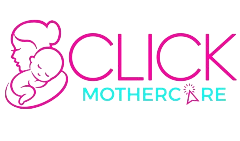As parents, one of our primary concerns is ensuring the well-being and comfort of our children, especially when they are in pain. Whether it’s a headache, fever, or minor injury, administering pain relief medication requires careful attention and adherence to safety guidelines. Here’s a comprehensive guide to safely administering pain relief to your little one:
- Consult with a Healthcare Professional:
- Before administering any pain relief medication to your child, it’s essential to consult with a healthcare professional. They can provide guidance on the appropriate dosage and type of medication suitable for your child’s age and condition.
- Read the Label and Follow Dosage Instructions:
- Always read the label of the medication carefully to understand the recommended dosage for your child’s age and weight. Avoid guessing or estimating the dosage, as incorrect dosing can be harmful.
- Use the Correct Measuring Device:
- When measuring liquid medication, use the appropriate measuring device provided with the medication, such as a calibrated dropper or oral syringe. Avoid using household spoons, as they may not provide accurate measurements.
- Administer the Medication as Directed:
- Follow the recommended method of administration, whether it’s orally, topically, or rectally, as instructed by your healthcare provider. Encourage your child to swallow the medication without chewing it, if applicable.
- Monitor for Adverse Reactions:
- Keep a close eye on your child after administering the medication for any adverse reactions or side effects. Watch for signs such as allergic reactions, vomiting, diarrhea, or unusual behavior.
- Store Medications Safely:
- Store all pain relief medications out of reach and sight of children, preferably in a locked cabinet or high shelf. Ensure that the medication is stored at the appropriate temperature and away from direct sunlight or moisture.
- Avoid Overmedicating:
- Do not exceed the recommended dosage or frequency of administration specified on the label or by your healthcare provider. Overmedicating can lead to serious health complications and should be avoided at all costs.
- Dispose of Unused or Expired Medications Properly:
- Safely dispose of any unused or expired medications following local guidelines or recommendations from your healthcare provider. Do not flush medications down the toilet unless specifically instructed to do so.
- Seek Medical Attention if Necessary:
- If your child’s pain persists or worsens despite medication, or if they experience severe side effects, seek medical attention immediately. Do not hesitate to contact your healthcare provider or visit the nearest emergency room if needed.
- Educate Your Child:
- Teach your child about the importance of using medication safely and responsibly. Encourage open communication about any pain or discomfort they may be experiencing and reinforce the importance of seeking help from a trusted adult.
By following these guidelines, you can ensure that you administer pain relief to your child safely and effectively, providing them with the comfort and relief they need during times of distress. Always prioritize your child’s well-being and consult with a healthcare professional whenever in doubt.

